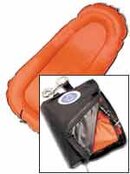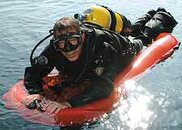- Messages
- 5,884
- Reaction score
- 3,000
- Location
- Lake Worth, Florida, United States
- # of dives
- I'm a Fish!
Good question. I don't really know if the courses are agency or factory. A factory course would be specific to the FFM while an agency could would presumably be generic to several brands of FFMs — excluding the KM Band Mask of course.
BandMask 18 | Kirby Morgan
Akimbo,
What would you think of the idea of using a Full Face Mask like the OTS ( Shop | Ocean Technology Systems )
for Non-Divers being taken on a Tooka or snuba type device ( surface supplied air) Instructor to student ratio of no more the 2 students to one instructor...and with this OTS mask system, the instructor could talk to the non-diver students the entire time....Max depth to be 20 feet, in very easy conditions...
Example tooka for non-divers without FFM at https://youtu.be/75VberZ2NkU
I have some friends that own a very high end resort, on an island, with many non-divers that would like a Scuba experience.
I have always disliked DSD scuba experience dives because the non-diving students will typically have no sense of how to control their buoyancy, as this is problematic even for many OW1 divers. With the tooka concept, all the student needs to do is breathe, and the instructor could use a FFM system to tell them to relax, to equalize, to swim flat...to grab the raft on the surface so they can chat...etc....
Thoughts?
Last edited:





